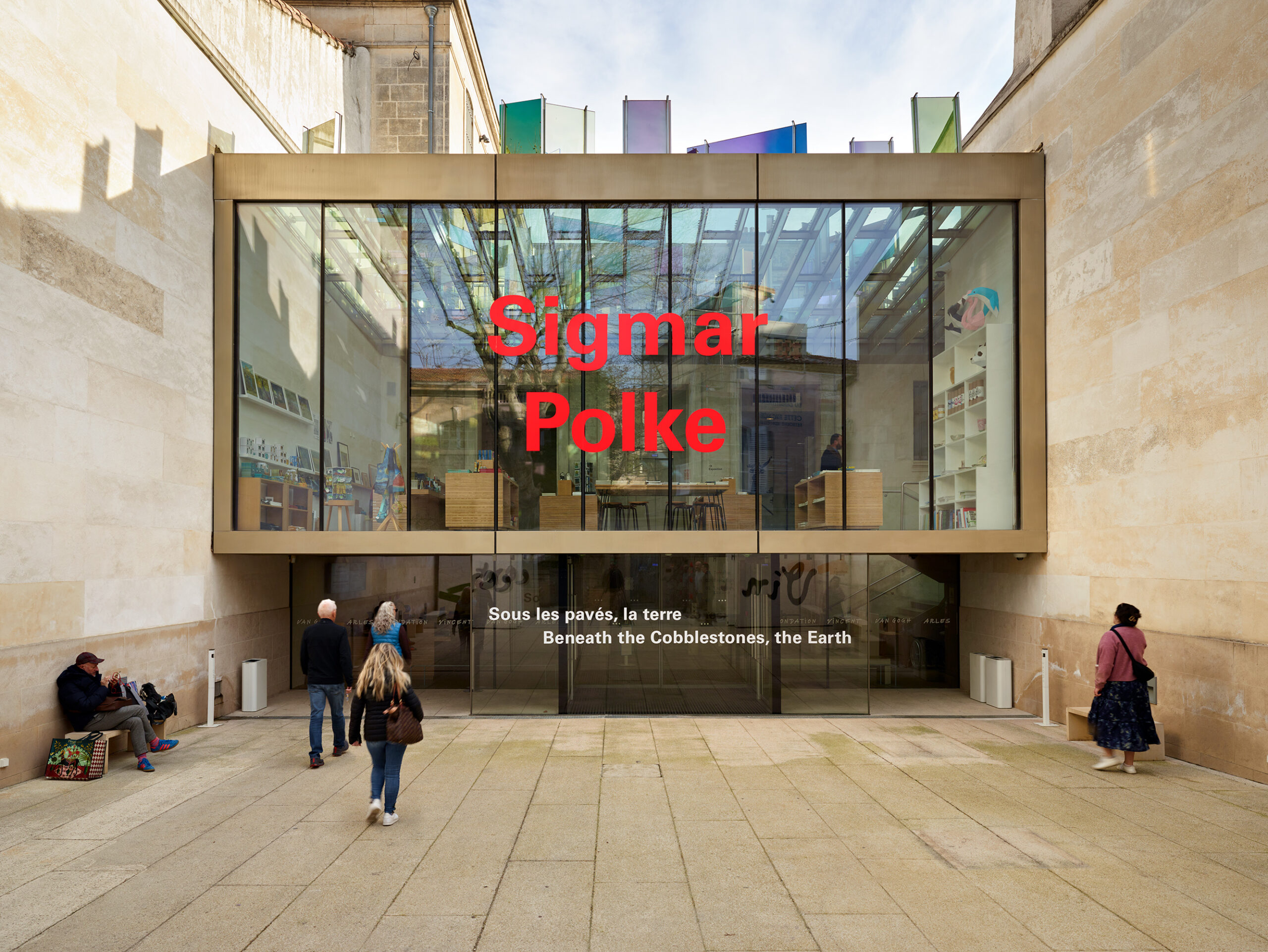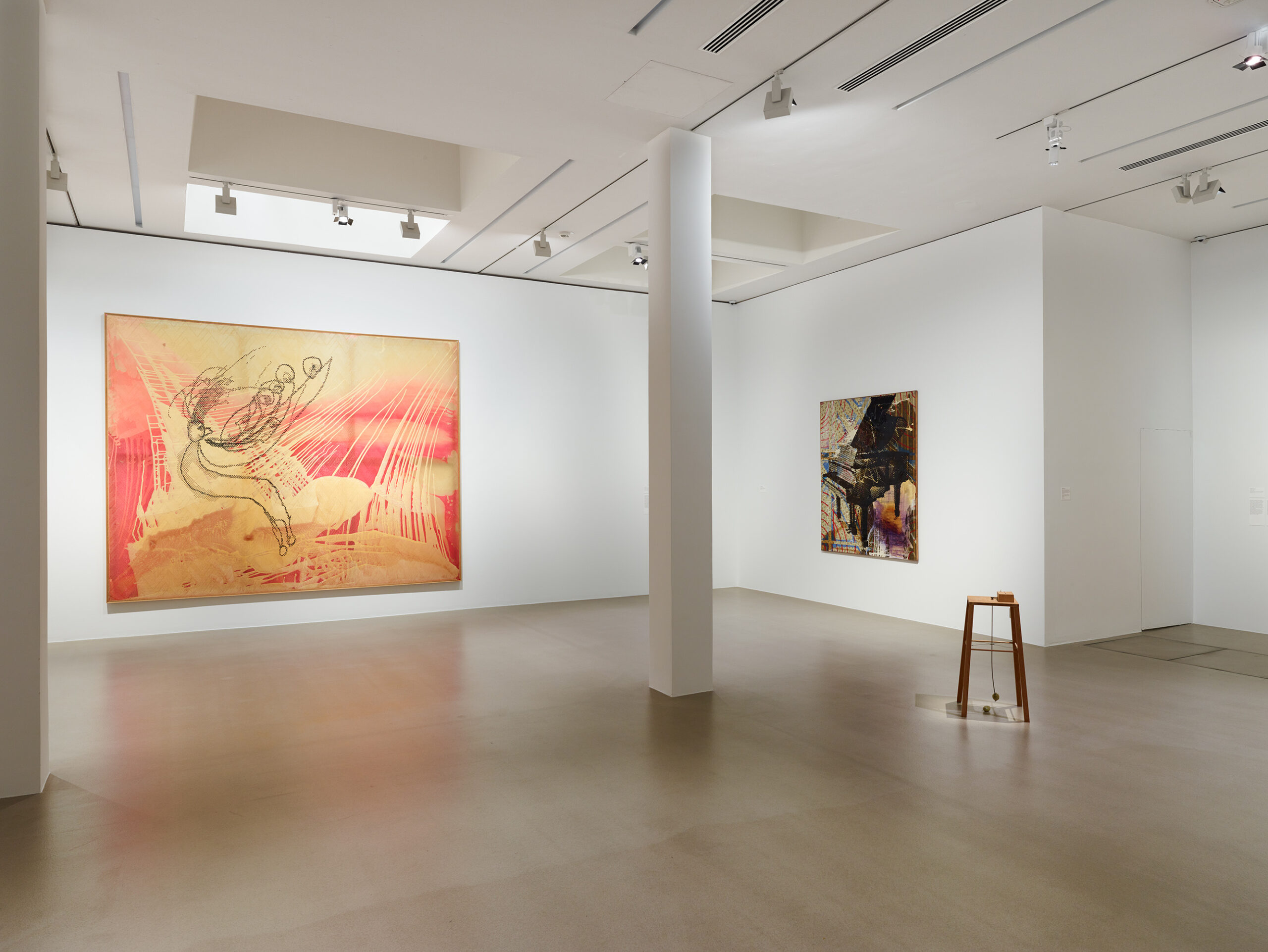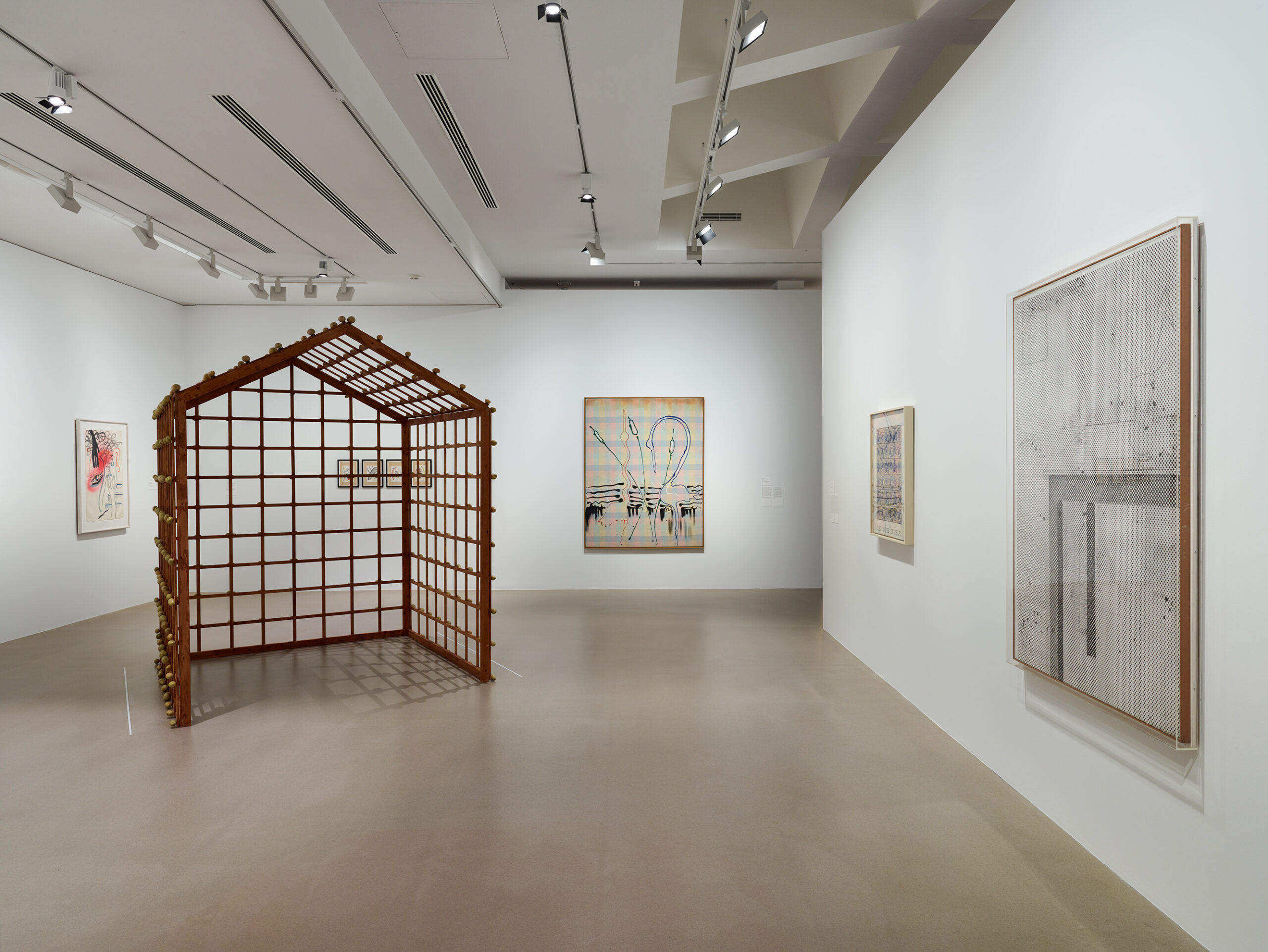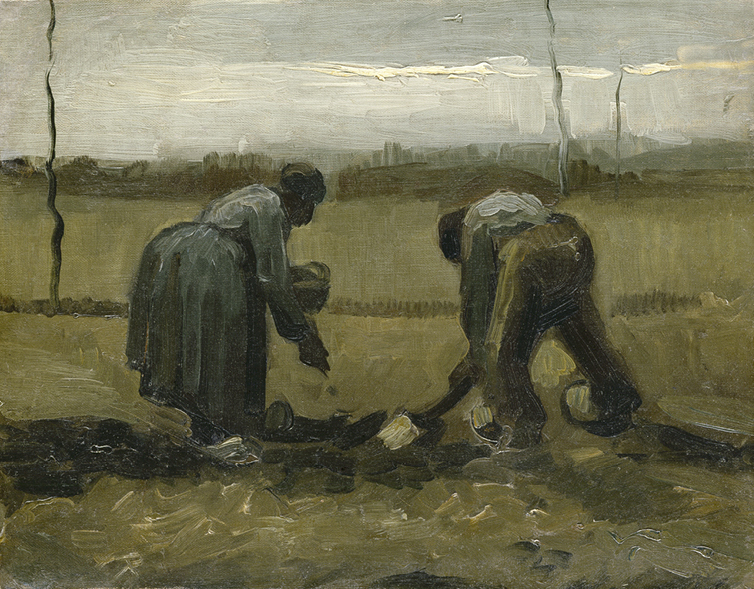Sigmar Polke (1941-2010)
Beneath the Cobblestones, The Earth.
This retrospective devoted to Sigmar Polke, the first in France since 2014, invites us to discover or rediscover one of the most important and innovative artists of our time.
We have brought together paintings, photographs, prints, sculptures and films to highlight the audacious nature of an artist marked by incisive humor, a passion for experimentation, and an ever-critical view of his time.
Two original paintings by Van Gogh, Peasant and Peasant Woman Planting Potatoes and Basket of Potatoes (Nuenen 1885), open the exhibition.
Curating : Bice Curiger, assisted by Margaux Bonopera
Read more
While the title of this exhibition refers to the famous French slogan of the May ‘68 movement, it is also a nod to one of the artist’s favourite motifs: the potato. Vincent van Gogh had already made it the symbol of farm labour and peasant life; almost a century later, it shows Polke’s attraction to popular culture in a Europe impoverished by the Second World War.
The theme of the earth also implies a desire to explore reality, which Polke cultivated throughout his life, as evidenced by his love of pictures published in the press, with their twinkling dots. As for the slogan of May ‘68—which Polke observed from West Germany—it refers to his liberating sense of humour and his taste for experimentation, combined with the gentle provocation of an audience with preconceived ideas; Polke would always seek to go beyond the limits and norms established by society and the art world.
Throughout the 1970s and 1980s, Polke’s painting was influenced by his practice of photography, and vice versa. In the darkroom, he handled the equipment and chemicals of silver processing as a painter, making each print a unique piece. At the same time, in the heyday of mechanical and industrial reproduction of images, he chose to use the medium of painting to interpret them by hand; here again, he employed all kinds of toxic products, exploiting their most mysterious, alchemical properties.
Throughout his exceptional career, Polke produced a significant number of paintings, photographs and films. In all these areas, he explored the media of our modern society and its mass visual production in a playful and experimental way. But beneath the irreverence and transgression of academic conventions lies a strong belief in art: for Polke, artistic creation is the place where we can deal with the repressed aspects of ourselves, with what has not been dealt with collectively, but also with wild beauty and poetry.
This retrospective devoted to Sigmar Polke, the first in France since 2014, brings together more than sixty works, some of which have never been presented to the public before. Visitors are invited to discover, or rediscover, one of the most important and innovative artists of our time.
Video - Polke Salon II — Interview with Bice Curiger and Julie Sissia : Cher Maître - (English subtitles available)
To view the English Subtitles : clic on the “CC” button.
You can discover more video about Sigmar Polke on the Anna Polke Foundation website.
Exhibition Leaflet – EN, IT, ES, FR & DE
To prepare your visit, you can read this chronology connecting the key milestones of Sigmar Polke’s life and artistic career to major world events that marked his era.
The document is available in 5 languages:
English : Beneath the Cobblestones, the Earth
Italiano : Sotto i sanpietrini, la terra
Espagñol : Bajo los adoquines, la tierra
Deutsch : Unter dem Pflaster, die Erde
Français: Sous les pavés, la terre







